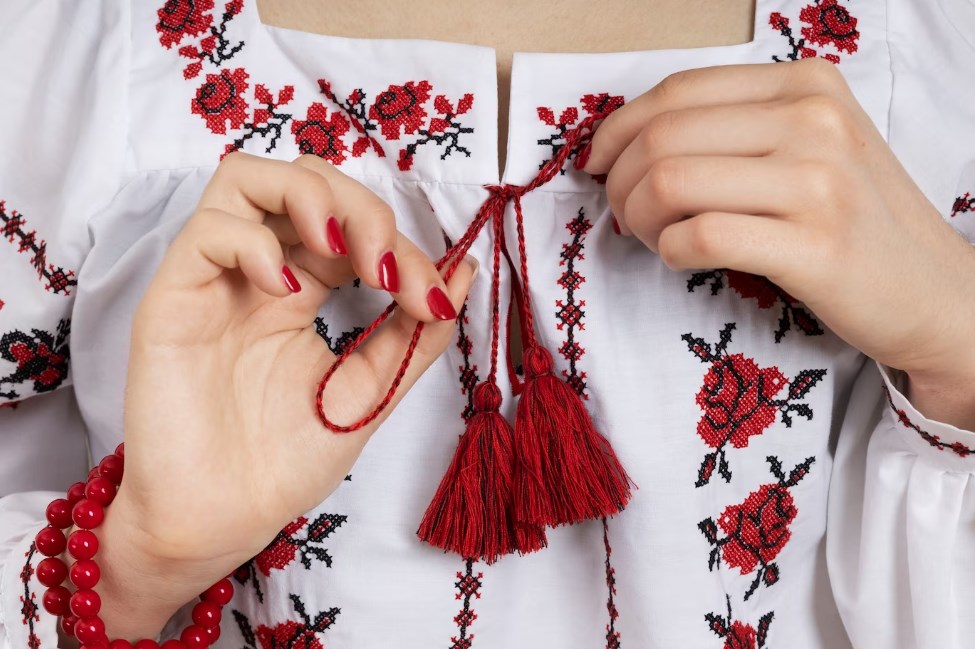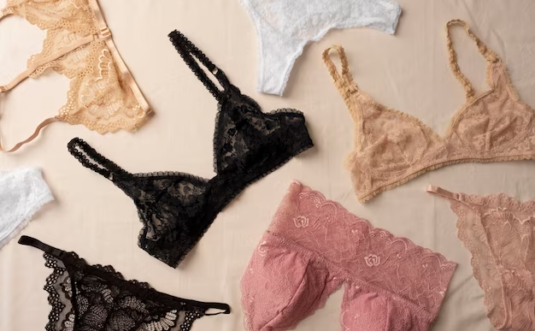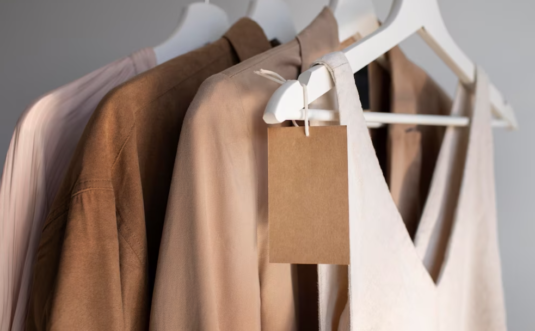Looking to make a fashion statement that is uniquely you? Embroidery on clothes offers a timeless solution. This ancient craft isn’t just decorative; it’s a robust form of self-expression and a window into cultural narratives.
Whether you’re a seasoned needleworker or a curious beginner, our all-encompassing guide will navigate you through the intricacies of embroidery—from understanding its historical roots to selecting the perfect design for your style. Plus, we’ll share maintenance tips to keep your embroidered pieces looking their best for years to come.
Ready to thread your path to individuality?
Let’s get started.
Understanding the Basics of Embroidery
Embroidery is the art of decorating fabric using a needle and thread. It is a versatile technique that allows you to create intricate designs and patterns on various materials, such as cotton, linen, and silk. From elaborate tapestries to delicate floral motifs, embroidery offers endless possibilities for expressing your individuality.
Embroidery is not just a decorative art form; it is also a way to preserve cultural heritage. Throughout history, embroidery has been used to tell stories, convey social status, and showcase craftsmanship. In many cultures, embroidered garments are passed down from generation to generation, carrying with them the memories and traditions of the past.
The History and Evolution of Embroidery
Embroidery has a rich history that dates back thousands of years. It originated in ancient civilizations, such as Egypt, China, and Persia, where it was used to embellish clothing and household items. The art of embroidery spread across the globe, with each culture adding its unique style and techniques to the craft.
- In medieval Europe, embroidery became a highly esteemed skill, practiced by both men and women. Elaborate tapestries depicting scenes from mythology and history adorned the walls of castles and cathedrals. The Renaissance period saw the rise of professional embroiderers who created intricate designs for the nobility;
- During the Victorian era, embroidery became a popular pastime for women of all social classes. Embroidery samplers, showcasing different stitches and patterns, were created as a way for young girls to practice their needlework skills. These samplers often became cherished heirlooms, passed down through generations.
Today, we can still admire the exquisite embroidery found in traditional garments from around the world. From the intricate floral motifs of Indian saris to the geometric patterns of Moroccan caftans, embroidery continues to be a vibrant and living art form.
Different Types of Embroidery Techniques
There are various embroidery techniques you can explore, each with its unique characteristics and effects. Some popular techniques include:
- Cross-stitch: This technique involves creating X-shaped stitches to form a pattern. It is often used to create detailed and precise designs;
- Chain stitch: With this technique, loops of thread are connected to form a chain-like effect. It is commonly used for creating outlines and borders;
- Hardanger: Originating from Norway, this technique combines cutwork and embroidery to create intricate geometric patterns. It is known for its delicate and lacy appearance;
- Crewel: Using wool thread and a variety of stitches, this technique is known for its textured and three-dimensional look. It is often used for creating elaborate floral designs.
Embroidery techniques can be combined and adapted to create unique and innovative designs. Many contemporary embroiderers experiment with different materials, such as beads, sequins, and even unconventional objects, to push the boundaries of traditional embroidery.
Essential Tools for Embroidery
Before you begin embroidering, it’s important to have the right tools on hand. Here are some essential items you will need:
- Embroidery hoop: This circular frame keeps your fabric taut and ensures even stitching. It comes in various sizes, allowing you to work on different projects;
- Embroidery needles: These needles have a sharp point and a large eye, making it easier to thread them. Different needle sizes are used depending on the fabric and thread thickness;
- Embroidery floss: This is a type of thread made specifically for embroidery, available in a wide array of colors. It is usually made of cotton or silk and can be separated into individual strands for different effects;
- Scissors: A good pair of sharp scissors is essential for cutting thread and trimming fabric. Embroidery scissors have a fine tip that allows for precise cutting;
- Fabric marking tools: These tools help you transfer your design onto the fabric, ensuring accurate placement. They can be as simple as a water-soluble pen or as elaborate as a tracing wheel and carbon paper.
Having the right tools not only makes embroidery easier but also enhances the quality of your work. Investing in high-quality materials will ensure that your embroidery projects stand the test of time.
The Art of Choosing the Right Design
When it comes to embroidery, choosing the right design is crucial. It should reflect your personal style and complement the garment you wish to embellish.
Embroidery has been a popular form of decorative art for centuries, with its origins dating back to ancient civilizations. It is a meticulous craft that involves stitching intricate designs onto fabric, creating beautiful and unique patterns. The choice of design plays a significant role in the overall aesthetic appeal of the embroidered piece.
Popular Embroidery Designs
There is a wide range of popular embroidery designs to choose from. Some timeless options include:
- Floral motifs: Whether it’s a single blossom or an intricate bouquet, flowers never go out of style. The delicate petals and vibrant colors of embroidered flowers can add a touch of elegance and femininity to any garment;
- Animals: Embroidered animals, such as birds, butterflies, and cats, can add a whimsical touch to your clothes. These playful designs can bring a sense of joy and liveliness to your wardrobe;
- Quotes and phrases: Embroidering meaningful words or quotes onto your clothes is a powerful way to express yourself. Whether it’s a motivational phrase or a personal mantra, these embroidered messages can serve as daily reminders or conversation starters;
- Geometric patterns: Clean lines and geometric shapes can create a modern and stylish look. From intricate mosaics to simple geometric forms, these designs can add a contemporary touch to your garments.
These are just a few examples of popular embroidery designs, but the possibilities are endless. You can also explore themes like nature, abstract art, or cultural motifs to find a design that resonates with your individual taste.
How to Choose a Design that Matches Your Style
When selecting an embroidery design, consider your personal style and the purpose of the garment. Are you going for a bohemian look or a more polished aesthetic? Embroidery can be versatile, adapting to different styles and fashion preferences.
- It’s also important to think about the colors and fabrics you enjoy wearing and how the embroidery will complement them. The right combination of colors can enhance the overall impact of the design and create a harmonious visual effect;
- Browsing through design options can be an exciting process. Take your time to explore different sources of inspiration, such as fashion magazines, online galleries, or even traditional embroidery patterns. Trust your instincts and choose a design that speaks to you on a deeper level.
Remember, embroidery is not just about adding decorative elements to your clothes; it’s a form of self-expression. The design you choose should reflect your personality, passions, and individuality. So, embrace the art of choosing the right design and let your embroidered garments tell your unique story.
Step-by-Step Guide to Embroidering Your Clothes:
- Preparing Your Materials: Before starting your embroidery project, gather all the necessary materials and ensure your fabric is clean and pressed. It’s also a good idea to practice your stitches on a spare piece of fabric to familiarize yourself with the technique;
- Transferring Your Design: Once you have chosen your design, you need to transfer it onto your fabric. There are several methods you can use, such as tracing the design with a fabric marking tool or using iron-on transfers. Ensure that the design is centered and properly aligned before proceeding;
- Starting Your Embroidery: Thread your needle with the desired embroidery floss and secure it with a knot at the end. Start stitching from the back of the fabric, bringing the needle up through the fabric and pulling the thread until the knot is flush against the back. Experiment with different stitches, such as the backstitch, satin stitch, or French knot, to achieve different effects and textures;
- Finishing Your Embroidery: Once you have completed your embroidery, secure the thread at the back of the fabric with a knot. If necessary, trim any excess thread and press your embroidered garment to set the stitches. Take a step back and admire your handiwork!
Tips for Maintaining Embroidered Clothes:
- Washing and Drying Embroidered Clothes: When it comes to washing embroidered clothes, it’s important to be gentle. Turn your garments inside out and hand wash them in cold water with a mild detergent. Avoid twisting or wringing the fabric. Instead, gently squeeze out the excess water and lay the garment flat to dry. If you prefer using a washing machine, place your embroidered clothes in a mesh laundry bag to protect them during the wash cycle;
- Repairing Damaged Embroidery: Inevitably, embroidery may get damaged over time. If you notice loose threads or small tears, repair them promptly using a needle and thread that matches the original embroidery. Carefully stitch around the damaged area to reinforce it and prevent further unraveling.
Final Thoughts
Embracing embroidery is a wonderful way to add a personal touch to your clothes. Whether you’re an experienced embroiderer or just starting out, the possibilities are endless. From mastering different stitching techniques to exploring new designs, embroidery allows you to unleash your creativity and make a statement with your style.
So why not pick up a needle and thread and start embroidering your way to fashion-forward uniqueness?




